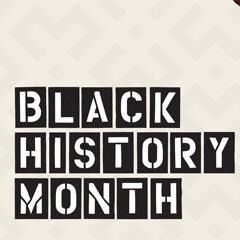Black History Month has been celebrated in Britain every October since 1987. There are many events around the country to commemorate the occasion and Liverpool in particular sees a rich variety of exhibitions, talks and films.
This has particular potency this year as the MOBO (Music of Black Origin) awards are being held in the city towards the end of the month. The three primary exhibitions: Trafficked, Home Alone: End Domestic Slavery and Beyond the Boundary are found at the International Slavery Museum, where the temporary exhibits fit in with the overall premise of the museum.
Beyond the Boundary is an extremely interesting study of the history of cricket: how the sport has been affected by and fought against colonialism and racism. Despite this display being very much focused on cricket, prior knowledge (or even fondness) for the sport is not required- I certainly don’t know one end of the bat from the other! It can be seen as an example of the many ways in which colonialist values have largely been overcome in contemporary society. This positive take on cricket’s history resonates throughout the exhibition, encapsulated by the fact that it is now a world sport and played in peace around the world (notwithstanding match-fixing allegations!)
Next we are led through to the exhibition entitled Home Alone: End Domestic Slavery, which concentrates on contemporary stories of slavery, reminding us that these incidents are even now prevalent.
Similarly, Traffickedconcentrates on a still widespread phenomenon: the trade of human beings. Both these exhibitions focus on the stories of individuals, which is incredibly moving, as we get a glimpse into hardships that could so easily be avoided. They are a good supplement to the International Slavery Museum, which documents a much-publicised history of the abuse of previous generations. Contemporary society however seems to have more trouble accepting what is happening now: similar experiences but much closer to home. Exhibitions such as these play an important part in bringing these issues back into the public consciousness and keeping up the fight.
Despite the highly relevant and emotive subject matter, it seems a shame that (beyond a disappointingly limited number of cricketers’ successes) black history is not more celebrated in these exhibitions. Of course, in the setting of the International Slavery Museum, the troubled interracial history has to be remembered; despite this, Black History Month also presents a prime opportunity to celebrate the success stories of black culture (rather like the MOBO awards). The issues behind Trafficked and Home Alone: End Domestic Slavery are critical and these campaigns should be brought to the fore of social thinking, but they seemed to outweigh the celebratory aspect of Beyond the Boundary and the positive elements that are even found throughout the permanent display.
As the aim of Black History Month is to celebrate as well as educate, these exhibitions should be viewed in the wider context of the museum and the city, in which the accomplishments of black culture are found in abundance.
Trafficked
31 July 2009 – 31 March 2011
Home Alone: End Domestic Slavery
10 September 2010 – tbc
Beyond the Boundary
19 March 2010 – 13 February 2011
International Slavery Musuem
Albert Dock
Liverpool
All exhibitions are free
For more information visit:
http://www.liverpoolmuseums.org.uk/events/ism/exhibitions/




